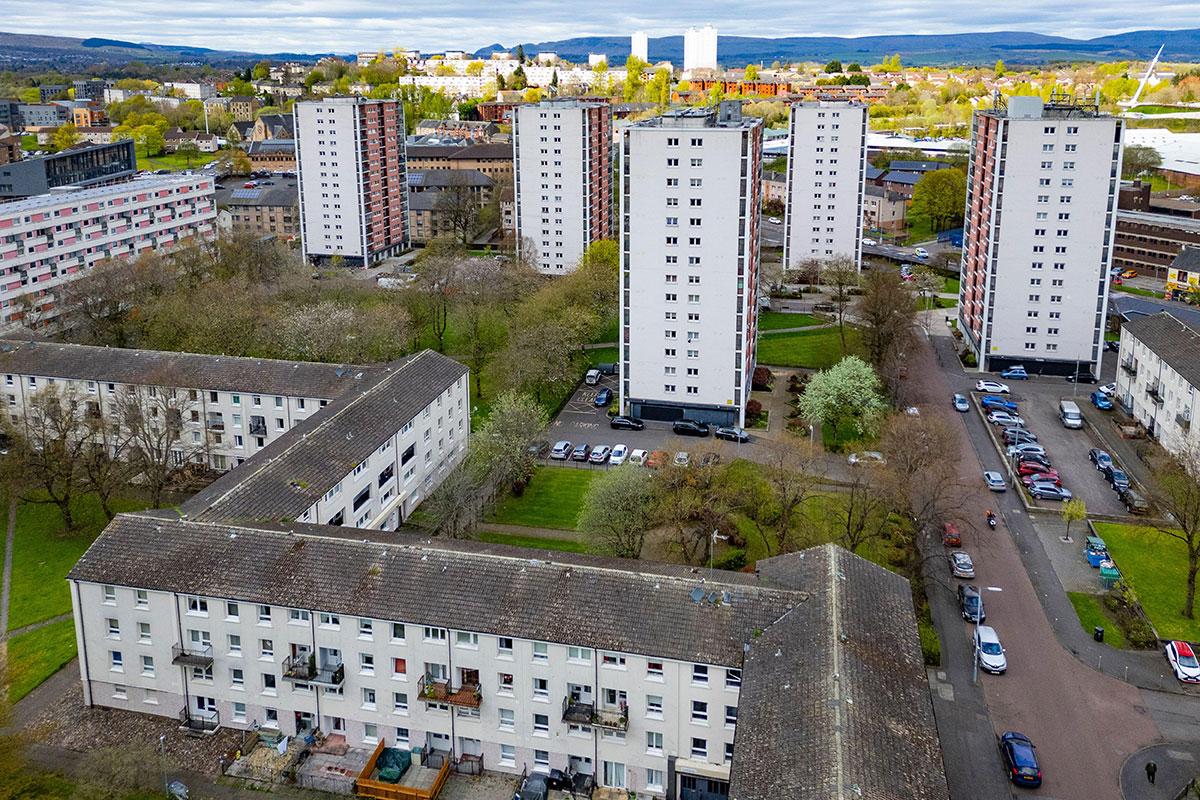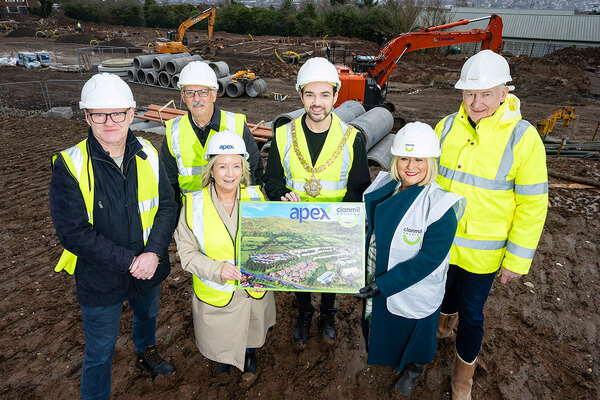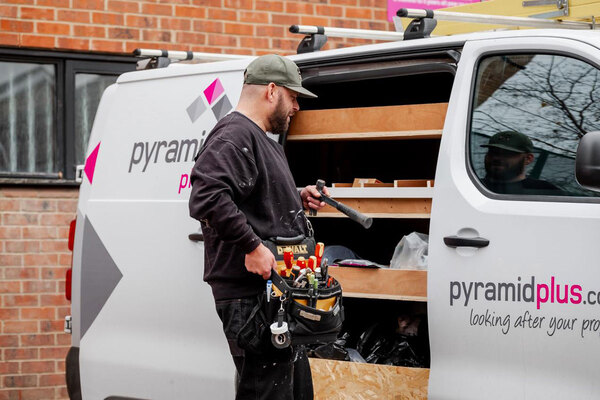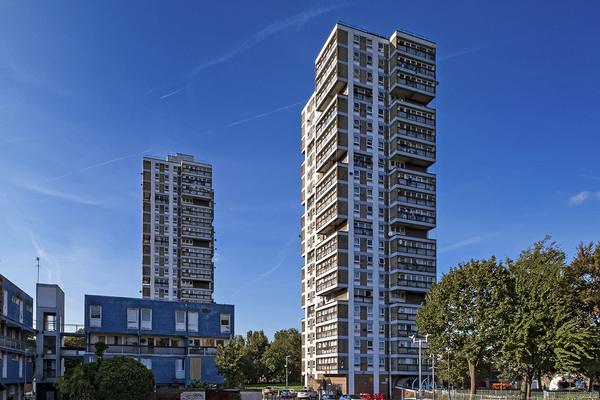You are viewing 1 of your 1 free articles
What you need to know about new regulations on resident engagement
This year has seen the introduction of two regulatory regimes for resident engagement that set new and more enforceable expectations on social landlords in England. Peter Apps speaks to the two regulators to find out what landlords should expect from the changes. Illustration by Vanessa Lovegrove
Housing associations in England (at least those in possession of tall buildings) have come under the oversight of not one but two new regulatory regimes over the past year. Both the Building Safety Regulator (BSR) and the Regulator of Social Housing’s (RSH) new consumer standards have come into effect, after a gestation period of several years.
And while building safety cases, tenant satisfaction measures and health and safety metrics may have grabbed the industry headlines, both regimes also bite in another area: resident engagement.
The BSR requires principal accountable persons (social landlords, where they own and manage the building) to prepare a resident engagement strategy, keep it under review and act in accordance with it.
For the RSH, meanwhile, resident engagement forms a key part of its new Transparency, Influence and Accountability Standard – one of five new standards which make up the new consumer gradings that social landlords are being scored against under the new regime.
So what do social landlords need to do to comply with the new requirements? And will they change resident engagement for the better? Inside Housing interviewed both regulators to find out more.
The RSH
Starting with the RSH, the standard says that social landlords must “take tenants’ views into account in their decision-making” and “communicate how tenants’ views have been considered”. This means giving tenants “a wide range of meaningful opportunities to influence and scrutinise their landlord’s strategies, policies and services” and “assist tenants who wish to implement tenant-led activities to influence and scrutinise their landlord’s strategies, policies and services”.
Kate Dodsworth, chief of regulatory engagement at the RSH, says that while the regulators’ ‘co-regulatory’ approach means it will not prescribe how to go about achieving this, there are specific outcomes it wants to see landlords achieve.
“The most obvious and clear outcome is that those tenants who give up time to scrutinise their landlord have the tools they need to do their job: clear, accurate, up-to-date information and a link with the board – or lead members if it’s a local authority – in order to see outcomes from their work,” she says.
But the expectation is that social landlords will have a strategy which allows engagement from those tenants who are not involved in formal scrutiny.
“It’s a much wider expectation,” says Ms Dodsworth. “The landlord cannot stop when they have five usual faces around the table. They need to find meaningful ways to engage with all tenants. And we are there looking for the evidence of that.”
This could mean picking up on patterns in complaints to ensure that where systemic problems are being raised by a wide group of residents, these are noticed and addressed, instead of being dealt with individually.
“We would expect to see that landlords are looking at patterns of complaints, understanding tenants who live behind the door. We want to know how landlords are gathering that [information] in order to resolve problems and shape services. We are looking for that both through our inspections and through the responsive route [when issues are brought to the attention of the RSH],” she adds.
How to engage with residents
The BSR has published a guide with the five key principles for resident engagement. They are:
- Understand who lives in each building: find out who residents are so that you can communicate effectively with them and design safety systems that respond to their needs.
- Engage via multiple channels: a ‘one-size-fits-all’ approach to engaging with residents about important safety matters will not work for everyone.
- Communicate information effectively: use accessible communication approaches and mixed formats to help residents understand and familiarise themselves with the systems that make them safer.
- Listen to residents: make it easy for residents to request information, respond to a consultation, raise concerns and escalate complaints.
- Be inclusive of everyone: understand what additional barriers some residents face, and how to remove them.
Ms Dodsworth, a former housing association chief executive, is well aware that resident engagement has been a feature of housing strategies for many years.
She says that the main difference that she wants to see from the new regime is that there is a specific outcome attached: resident engagement should not just be a box ticked, or a token part of the process – it must have a specific end in influencing the landlord’s services.
“From our perspective, we aren’t going to be setting out a paint-by-numbers resident engagement strategy,” she says. “We are an outcome-focused regulator and we expect that landlords of all different sizes will find the best way for their resident engagement and scrutiny to deliver. But there are some commonalities in what we want to see achieved. Comparing it to how resident engagement has been in the past, this has to be for a purpose and that purpose is to deliver homes that are of good quality [and] safe, and to deliver better landlord services.”
Marion Duffy, chief operations officer at 49,000-home Birmingham-based housing association Platform, tells Inside Housing the landlord had its most recent in-depth assessment (IDA) just before the new consumer standards came into effect. But conscious that the changes were just around the corner, Platform asked the consumer standards team to look over its strategies and make any suggestions for how it needed to adapt.
“What I took from Kate is that whatever you’re doing with customers, there has to be an outcome. I think they are being the customer voice, and I don’t think there’s anything that [they are asking us to do] we can’t or shouldn’t be able to deliver on. It will take investment in our homes, but we should be prepared to be accountable for that. So I see it as very positive,” says Ms Duffy.
She says Platform’s approach has been to try and embed the culture of resident engagement in its business “down through everyone who works for the organisation”.
“The idea of assessing themes in complaints is also one which the landlord is applying. We look to see if there are themes. If there is a scheme, for example, where lots of similar complaints come up, we would actively go out and speak to the customers collectively,” she says.
“I suppose it comes down to co-creation of our services. A lot of customers, after Grenfell and all the bad press recently about housing management, did start to ask if they could trust their landlords, and it’s really important to us that we have customers who trust us and know they can have a say.”
What about the rest of the UK?

The RSH and the BSR only regulate in England, but other UK regulators also take resident engagement into account. In Scotland, the Scottish Housing Regulator requires landlords to provide tenants “with easy and effective ways to provide feedback and raise concerns” and ensures that it considers such information and provides a quick and effective response, among other standards which are not dissimilar to the UK requirements.
In Wales, where regulation is carried out by the government, the headline requirements on social landlords state they must demonstrate that “tenants are enabled and supported to influence strategic decision-making and shape the delivery of services”.
In Northern Ireland, ensuring that “social housing tenants are protected and provided with opportunities to be involved with their [housing association]” is also a headline part of the government’s regulatory standards.
She adds that culture is crucial in achieving this. “It really starts with the culture within the organisation. If you’ve got the right culture, where everyone has the same understanding that we’re here to provide a great service and if we get it wrong – which everyone does from time to time – that we respond to them and that complaints don’t get put into a pile and not dealt with. You’ve got to do something about it and put it right – that immediately rebuilds trust,” she says.
The BSR
How about the new building safety regime the BSR is implementing for high-rise residential buildings?
This is now a legal requirement for all the managers of high-rise buildings, including social landlords.
“The reason the resident engagement strategy is enshrined in law goes back to Grenfell and the need to rebuild public trust in a system they saw as having failed, and to create a system where residents feel informed and empowered,” says Andy McGrory, policy lead for resident engagement at the BSR.
But the regulator also believes that involving residents is a highly practical means to ensure buildings are safe: residents have the clearest interest in the building being properly maintained and are the most frequent eyes and ears. “It’s like a car MOT,” says Mr McGrory. “However good the inspection is, it’s only reflective of the day you took the car into the garage. If you have residents who can spot something as soon as it goes wrong and let you know, you are going to get a safer outcome for everyone.”
Like the RSH, the view of the BSR is that the engagement needs to be meaningful rather than a tick-box process. “It’s not just about providing information and responding to complaints, it means sharing information in a way people can understand, being proactive about sharing information and really allowing residents to have a say in decision-making,” he says.
“If residents are coming back and asking for more detail, they should get it, and when they raise concerns, there should be means in place to ensure they are investigated and acted on if appropriate.”
The BSR has published a guide with five principles for successful resident engagement (see box above: How to engage with residents) and one of these is that the strategy must take into account the specifics of the individual building.
“You can have an over-arching strategic position if you have lots and lots of buildings, but the resident engagement strategy needs to be on a building-by-building level.
“If the building is overlooking Hyde Park in Mayfair, the engagement strategy will need to be very different to a housing association high rise in Birmingham. You need to be taking into account the population of the building, what their needs are, language barriers, levels of disability and any other factors that might be relevant to that particular building,” he says.
In the end, there is a good deal of overlap between these two regimes. Both want to see information shared freely and transparently. Both want to see landlords make their engagement processes easily accessible and must make them meaningful. It is about a rebalancing of power. Given that both trace their lineage back to the aftermath of the Grenfell Tower fire, and the realisation that residents had not always been put at the centre of services, this is another key opportunity to ensure that it leaves the legacy of that terrible fire firmly in the past.
Recent longform articles by Peter Apps
Cladding remediation: why is progress so slow?
It has been nearly seven years since the Grenfell fire, yet thousands of buildings are still in need of cladding remediation. Peter Apps investigates why the process has been moving at such a glacial pace
How a ‘Google Maps of heat loss’ might make retrofit easier to plan
Technology is opening up new ways to quickly assess which homes are leaking heat, making them a priority to retrofit. Peter Apps reports
What it is like to live in Nine Elms as an affordable housing resident
While the wealthy private owners of flats in Nine Elms enjoy the use of the swimming pool and orangery, affordable housing tenants are struggling to get repairs done. Peter Apps reports
The water will come: how should the social housing sector prepare for a wetter world?
Peter Apps looks at how social landlords should prepare themselves to respond to flood emergencies, which are set to become more frequent as the climate changes
The office-to-residential conversions which have become slum housing
Poorly converted office blocks are putting people in temporary accommodation at risk of serious harm. Peter Apps reports
Sign up for our regulation and legal newsletter
Already have an account? Click here to manage your newsletters









